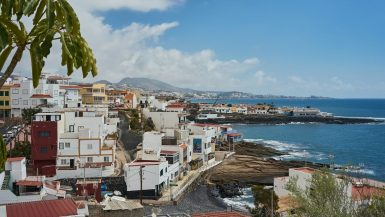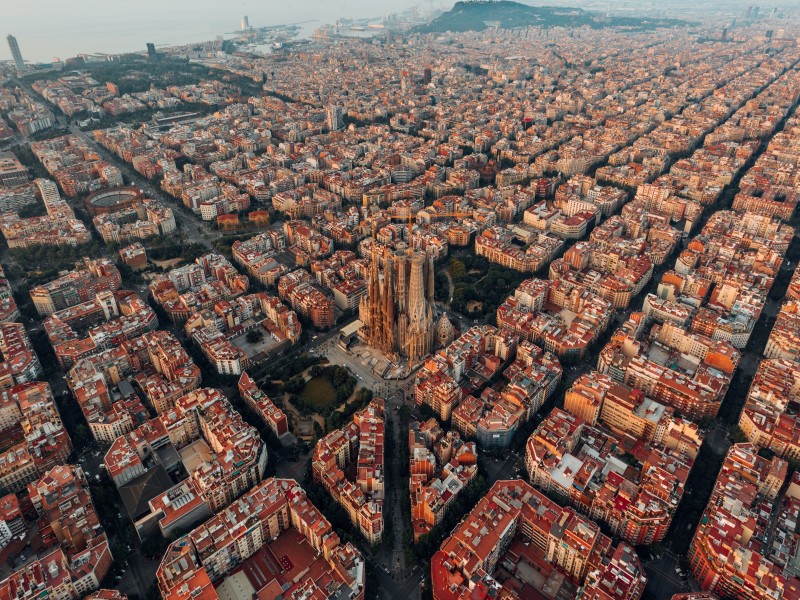
Barcelona or Seville – now that’s a tricky one. These are undoubtedly two of Spain’s most alluring metropolises. But they’re also just about as far as it’s possible to get away from each other while sticking to the mainland, with the first sat on the far east coast on the Balearic Sea and the latter deep in the western half of Andalusia. You might have to pick just one, we’re afraid.
On the one hand, there’s Barcelona, the Catalonian capital, with its world-renowned Gaudi architecture, all-night parties, and golden beaches. Then there’s stunning Seville, a place steeped in Mudejar and Moorish building work, wrapped in an enthralling history, and laying claim to the culinary wonders of tapas.
This guide will dive into these two lively regional capitals, so you can figure out which city is the best option for your next vacation. We’ll take a look at everything, from the logistics of getting there in the first place to the amazing things to do and see that are on the ground to the nightlife scenes and a whole load more. Let’s begin…
Barcelona or Seville: Getting there
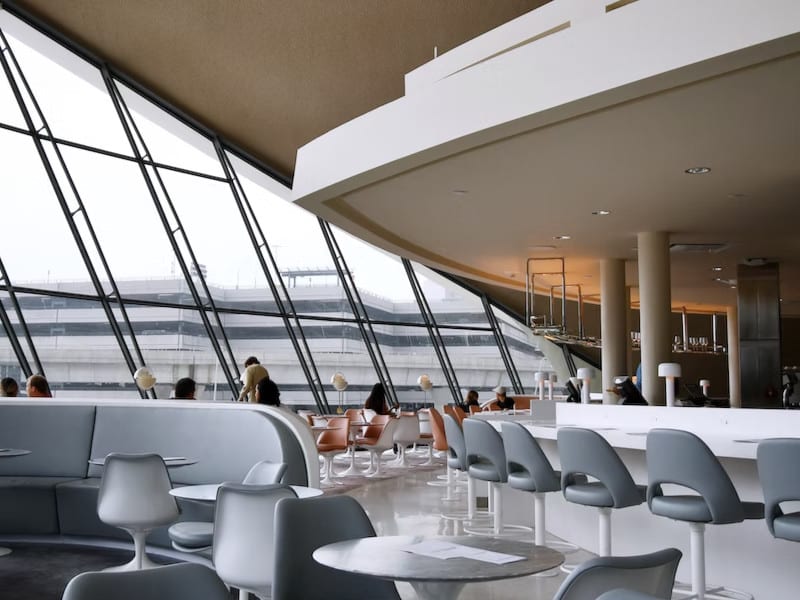
The good news is that because both of these are pretty large regional hubs, they both come with their own international airports. That means jetting in for just a few days for a city break is possible in either Seville or Barcelona.
That said, we’d still stay Barcelona is the easier of the two to get to. The reason? It’s huge Barcelona-El Prat Airport is the second-largest in the whole of Spain; the sixth busiest in Europe, no less. It handles long-haul and short-haul flights galore, including loads with budget fliers like easyJet and Ryanair across Europe. And there’s more, because Barca has a second airport at Reus with short-haul European links, and a high-speed train terminal that links it to Madrid and France alike.
Seville Airport (SVQ) is still well-served. In fact, it’s the main gateway to Western Andalusia, with over 7.5 million passengers annually. European travelers will be pleased to hear that Ryanair now have an extensive network of flights linking across to the town, from as far afield as Poland and as close as close as Porto. When it comes to the railways, the famous Madrid–Sevilla high-speed line – the first high-speed line actually built in Spain – serves this city, with locomotive connections to the Spanish capital in as little as 2.5 hours!
Winner: Barcelona wins, but Seville is still a very accessible city. Don’t let this one be the deciding factor!
Barcelona or Seville: Getting around
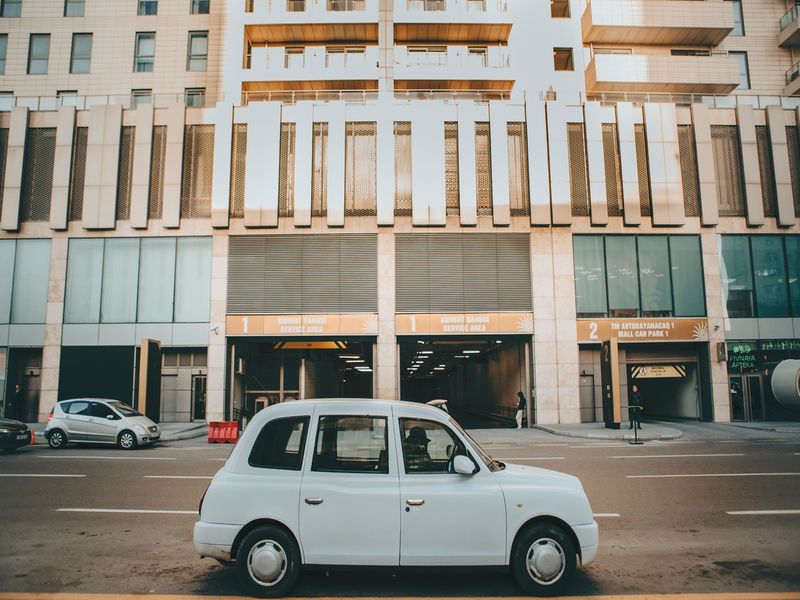
Access to public and private transport can vary greatly between cities, even cities in the same country. And the same can be said for both Seville and Barcelona.
Barcelona is well-known for its extensive and accessible public transport systems. Despite being an enormous city, its bus, train, and tram networks make it reasonably easy to move around to most districts and the beaches alike.
There are three separate train systems that can be used to get around the city: The TMB Metro, which operates the majority of city train lines, the government-operated FGC, and the Rodalies regional train network.
Traveling by train or metro is the fastest and most comfortable way to get around. The second fastest way is by bus, which are great for short hops or getting to lesser-known outer neighborhoods. Taxis and rideshare services are also easy to access in Barcelona, though they can be a touch pricy in this popular city.
If taking public transport in Barcelona, we recommend you purchase a multi-day pass depending on the duration of your stay. This gives you unlimited travel during your stay on all modes of public transport, and some passes even include free admission or discounts to certain museums!
Seville is a significantly smaller city, with almost a quarter of the population of Barcelona. But it still has a convenient, accessible, and extensive public transport system that will easily get you from one spot to the next. What’s more, the smaller size means it’s a lot more walkable, so is a better option for folks who don’t like to spend too much time navigating their way from A to B.
The city has one metro line connecting the central areas to surrounding suburbs, along with a very extensive public bus network. There is also a Metro-Centro tram line that runs through the center of the city. You can also purchase a tourist card that gives you unlimited passes for all public transport for 1 to 3 days, and taxis and rideshare apps are also commonly used by locals and tourists alike, coming in with generally smaller price tags than over in Barcelona.
Winner: Barcelona has the more extensive transport network, so wins this. However, Seville is more walkable, so there’s that.
Barcelona or Seville: Things to do
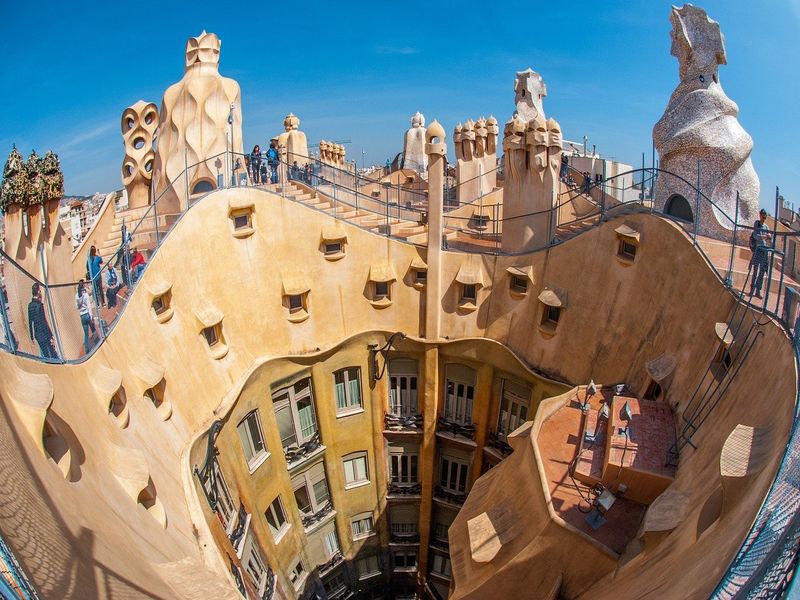
Barcelona is often called the cultural heart of Spain. For centuries it has been home to some of the world’s great artists, architects, and writers. Many of the best tourist attractions you’ll find here will reflect this deep legacy.
You simply have to visit the wondrous buildings designed by Gaudí, one of the greatest modernist architects. They include the incomparable UNESCO World Heritage Site of the La Sagrada Familia, and the innovative La Casa Milà, amongst others. Güell Park is also a gorgeous blend of art, nature, and architecture that bears Gaudí’s name.
Be sure to pay homage to some of the city’s legendary artists at the Picasso Museum and the Joan Miro Foundation, too – together they contain some of the greatest Spanish artworks ever made. If you lean more toward sports and recreation, you should try to catch a Barcelona FC match with a stop at the colossal Camp Nou, the Barcelona stadium. And don’t forget to explore the city’s two most iconic districts: Las Ramblas and the Gothic Quarter.
A visit to Seville is the perfect opportunity to peek into a more traditional side of Spanish culture, through its historic sites, architecture, venues, and cultural performances. Many of the best tourist attractions in this city reflect deep traditions and art forms that have great importance to Spanish people.
For historic buildings and stunning traditional architecture, check out the Alcázar Real de Sevilla, or the Royal Alcazar Palace and Seville Cathedral (the largest Gothic cathedral in the world). They’re both found in the city’s historic Jewish quarter, alongside the 12th-century Torre del Oro (the Tower of Gold) and the exquisite Casa de Pilatos mansions.
For cultural sites, tourists are encouraged to visit Plaza de Españam (built for the Ibero-American exhibition of 1929), and the historic Triana district. Nearby, you’ll also find the Plaza de Toros, the largest bullfighting arena in Spain. And then there’s Flamenco, one of the great archetypal Spanish art forms. Check out a traditional show, which can be found in various venues across Seville.
Winner: Barcelona. As the second biggest city in Spain, you’ll find more varied attractions that will likely appeal to a wider array of travelers.
Barcelona or Seville: Nightlife

If we’re being honest, Barcelona offers some of the best nightlife activities in the whole of Europe. It should come as no surprise that it beats Seville to the top here. The Madrileños will surely disagree here, but lots say it khas the single best nightlife scene in Spain…
Most famous for its Fiestas is Las Ramblas, where 99% of first-time tourists will begin their journey into Barcelona’s nightlife, largely due to its central location and countless clubs and bars. After that, take a walk down the maze-like alleys of the historic Gothic Quarter, where you’ll find more locals and a distinctive mix of venues, such as trendy cocktail bars, homey pubs, and dive bars.
But you should also know about the thumping mega clubs of Port OIimpic, a seaside area that channels a touch of Ibiza with its multi-floor DJ venues. And you should be sure to drop by El Raval, an upcoming hipster haunt with vibey tapas spots and hidden EDM clubs.
None of that is to say that Seville has nothing to offer in terms of parties, clubs, and bars. In fact, Seville has a very active nightlife scene, and its own unique atmosphere once the sun sets on the Mudejar spires of the city.
Relaxed bars and cafes abound in Calle Betis, and for flamenco performances in the streets or on the stage, visit the historic Triana district. Here you’ll also find some of the city’s best nightclubs and discotheques, which come with a bit of an alternative edge. If you want something a little more glamorous and upmarket, head to Alameda. Last of all is Alfalfa, where thousands of the city’s university students congregate each weekend.
Winner: Barcelona.
Barcelona or Seville: Day trips
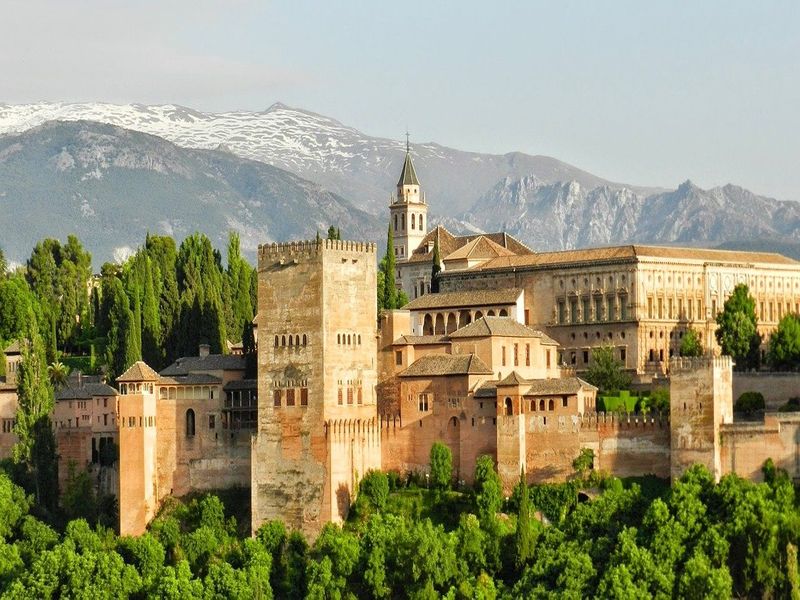
Want to jump on a train and be transported to an entirely new destination? Make the most of your trip to Barcelona or Seville by taking advantage of the excellent day trips on offer just outside of both cities.
Barcelona is close to a number of gorgeous locations, both on the Mediterranean coast and further inland. These include:
- Montserrat Monastery – The holiest mountain in Spain is only an hour’s train ride from Barcelona. It’s a short cable car ride to the summit where you’ll enjoy dramatic views and explore the 11th century Montserrat Monastery.
- Girona – Famous for featuring in multiple episodes of the hit HBO show Game of Thrones, medieval Girona is an absolute treat for the eyes with its colorful tenement houses and intricate historic sites. It’s also hailed as the cycling capital of Europe.
- Figueres – If you’re looking for something a little different, take the 2-hour train trip to Figueres, the birthplace of famed surrealist artist Salvador Dali. The Salvador Dali Museum is a cultural wonder, with the largest collection of surrealist art in the world.
- Sitges – For a more slow-paced, salt-washed day trip in Spain, head to scenic Sitges to swim at the pretty beaches, discover sweet cafes and boutiques, and marvel at the Mediterranean mansions along the cliffs.
Similar to Barcelona, Seville is in close proximity to a large number of historic sights and cities, and charming towns, including (but not limited to)…
- Córdoba – Most famous for the incredible Moorish-era mosque La Mezquita, the city of Córdoba is a dream for those interested in architecture, and also has a great art museum within a Renaissance palace.
- Cadiz – Known for its eccentric residents, frequent street parties, and ancient Phoenician history, Cádiz is a fantastically lively port city that will easily keep you entertained for a day.
- Ronda – If you’re in Andalucia, you can’t miss the famous pueblos blancos (white towns), known for their whitewashed buildings. Ronda is one of the best examples of those, with its epic gorge and thrilling histories. It’s a 2.5-hour train ride from Seville, but the scenery along the way showcases wild sierras and windmill-topped mountains.
- Granada – A train ride to Granada is also a little long, but we couldn’t recommend this enchanting city enough. Nestled at the foot of the Sierra Nevada and below the jaw-dropping historic Islamic fortress complex of the Alhambra, spend your day exploring historic gardens, neighborhoods, and palaces.
Winner: A draw. Both cities offer very impressive opportunities for day trips that will appeal to any travelers wanting to experience more Spanish culture, history, and natural scenery.
Barcelona or Seville: The food
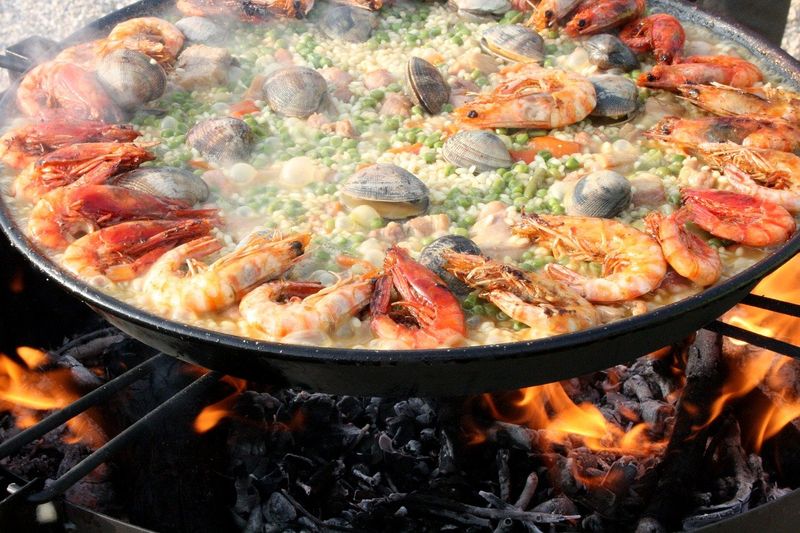
What lots of folks don’t know is that Seville lays claim to some of Spain’s most famous food & drink exports – such as tapas and sangria! There are literally thousands of tapas spots in Seville’s historic center and countless other unbeatable eateries in surrounding neighborhoods like buzzy Triana. Experts will often say it’s the place to go for sampling authentic Andalusian cooking.
Eating out in cafes, bars, and restaurants is an integral part of Sevillian culture. There are options on literally every single street here, so you’ll be spoiled for choice. So, rather than recommending specific restaurants, we’ll suggest some of the best authentic Andalusian staples…
- Carrillada de cerdo – These braised pork cheeks are served in a thick gravy of onions. Sure to fill you up for all that sightseeing.
- Espinacas con garbanzos – A cracking tapa for the veggies, this is spinach with chickpeas.
- Gazpacho – Perfect refresher for the summer months; a cold tomato soup.
- Rabo de toro – Oxtail that’s actually more common in Cordoba but still worth a try here because it’s filling and hearty country food.
- Cazón en adobo – A boneless whitefish that’s lightly fried after being rolled in breadcrumbs.
Now, for the capital of Catalonian cuisine! Of course, Barcelona has its own unique dishes that are specific to the city and the wider region of Catalonia. But, as the second-largest and second-most populous city in the country, it also offers a ton of cuisine from across the country, as well as international offerings.
Like Seville and many other regions of Spain, tapas is a staple of Barcelona and can be found everywhere. However, in these parts, it’s more commonly called pintxos in the Basque style. Here are some of the most quintessential things to sample…
- Esqueixada de bacallà – A summer dish using Catalonian cod.
- Bombas – A potato croquette, inspired by an important part of modern Barcelonian history. We’ll leave it to the front of house to tell you the tale!
- Calçots and romesco – Grilled Catalonian onions with homemade romesco sauce.
- Mató – A famous and sweet Catalonian goat cheese, usually paired with honey and walnuts.
- Mandonguilles amb sípia – Meatballs with cuttlefish. Catalan surf and turf.
One other unique aspect of Barcelonian food culture is its historic restaurants, such as the famous 4 Gats, where artists like Picasso and Gaudí once supped and held meetings in the evenings, and 7 Portes, a landmark restaurant founded in 1836!
Winner: Seville. Fantastic food can be found in both cities, but Seville is truly a Spanish paradise for foodies.
Barcelona or Seville: Weather and climate

If you like your summers as hot as a plate of patatas bravas, then Seville’s your Huckleberry. Basically, Seville is ranked as the single hottest city on mainland Spain. Now, before you get too excited and start throwing the sunscreens into the luggage, remember that’s not necessarily a good thing. We’re talking peak temperatures in July and August that can be stifling – like, over 100 F (40 C) sort of stifling.
On the flip side, it does mean that Seville enjoys a very long peak season, and extremely pleasant springs and autumns. Those traditional shoulder seasons are usually dry, balmy, and clear, with daytime averages that are what you’d usually expect from a midsummer’s day in the UK. To be honest, we’d steer clear of the high summer and pick the shoulders because the weather then is simply lovely, even while it’s raining and chilly back at home.
Barcelona enjoys a classic Mediterranean climate that’s tempered by the proximity of the sea. The location between the water and the high Pyrenees helps to channel winds that help to cool the metropolis a touch in the summer months, meaning it’s rarely as overwhelmingly hot here between June and August as it is in say, Madrid (or even Seville).
Barcelona can get cold in the winter, with even the occasional bout of snow coming over the spires of the Sagrada Familia. Usually, though, you’re looking at average temperatures of 15 C around January and December, so you’ll need a jacket and trousers for explorations then.
Winner: Seville for the long, long summers, but we’d probably prefer Barcelona in the peak summer because it’s a touch cooler.
Barcelona or Seville: The final verdict

These two vibrant, colorful cities offer two very distinct perspectives of both modern and traditional Spanish life. They are each excellent examples of what the country has to offer, and you’d be likely to enjoy a trip to either Barcelona or Seville.
But, if you only have the time to choose one of these beautiful cities and are a first-time traveler to Spain, we have to recommend Barcelona. It has possibly the broadest tourist appeal in the country, from its raucous nightlife to its incredible heritage of art and architecture – especially the Sagrada Familia. There are also beaches on the doorstep and mountains to the back, so you get the full Spanish experience.
That said, Seville is a brilliant city that probably offers a more unique glimpse into Spanish customs and traditions, with its rich food culture, love of flamenco, and iconic bullfighting arena.
What are the main things to see in Barcelona?
The main thing to see in Barcelona is the iconic architectural wonders of Antoni Gaudi. They include lots of buildings on the Las Ramblas boulevard but also the super-famous cathedral complex of La Sagrada Familia. On top of that, there’s an immersive Gothic Quarter and lovely beaches along the Mediterranean Sea.
What are the main things to see in Seville?
The main things to see in Seville are the historic Spanish palaces and the old town area. The most famous landmarks include the Royal Alcázar of Seville and Cathedral and La Giralda, which both fuse elements of North African and European Gothic design in beautiful style. The town is also known for its immersive neighborhoods filled with creative tapas restaurants and bars, like Barrio de la Cruz and Triana.
Which city is better, Barcelona or Seville?
It’s impossible to say that either Barcelona or Seville is better than the other. However, we would recommend Barcelona over Seville to first-time travelers to Spain because it’s got some of the country’s most iconic sights. That said, Seville would come up trumps if you like Andalusian food, very hot weather, and a more traditional experience of Spain.
